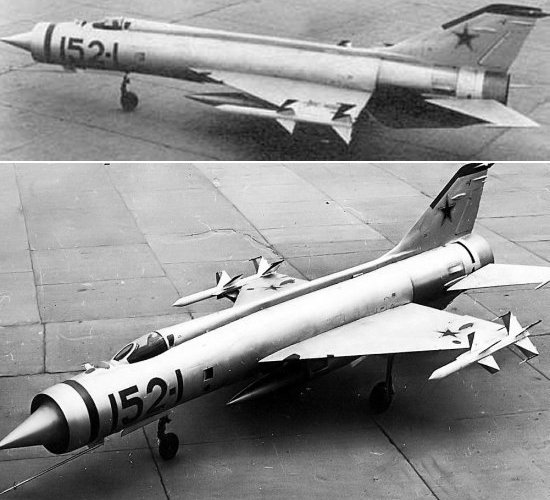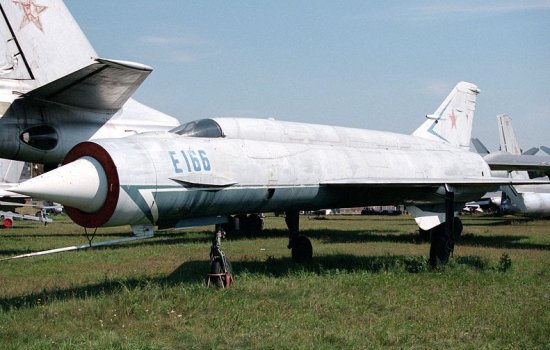|
||||||||||
|
|
||||||||||
|
||||||||||
|
|
||||||||||

The improved F-106 completed a number of test flights in early December 1959 with Air Force test pilot Maj. Joseph Rogers at the controls. During two weeks of testing, Rogers pushed the F-106 to its limits to prove out the modified design. Unfortunately, each flight was marred by engine compressor stalls that resulted in violent yaw oscillations. Although engineers and mechanics attempted to adjust the engine and eliminate the undesired behavior, no successful correction could be found. The test team was forced to remove the modified F-106 from the program and instead use a standard production vehicle for the remainder of the test effort.
The back-up plane was serial number 56-0467 and made its attempt at the world speed record on 15 December 1959. During his very first flight in the new F-106, Maj. Rogers successfully broke the record previously set by the Ye-152-1 and claimed a new speed of 1,525.95 mph (2455.78 km/h) at an altitude of 40,000 ft (12,190 m). That speed at that altitude equates to about Mach 2.31. The record was set over an officially recognized straight line course 11 miles (18 km) in length, and Rogers reported that his speed might have been even higher since the plane was still accelerating as it left the course. For his exploits, Rogers received the Distinguished Flying Cross, the DeLavaulx Metal, and became the 25th recipient of the Thompson Trophy.
The Soviets, meanwhile, resurrected the Ye-152-1 test aircraft in hopes of recapturing the speed record. The Ye-152 was based on the earlier Ye-150 and both were developed as improved versions of the MiG-21. The Ye-152A used two of the engines of the basic MiG-21 with a modified nose inlet and other aerodynamic modifications to improve rate of climb and maximum speed. The Ye-152-1 was a further modification of the Ye-152A with an enlarged wing and revised tail design but returning to a single engine layout. Yet another variation was the Ye-152-2 that tested additional minor modifications to the design.

These two test aircraft were followed by the definitive Ye-152M that was intended to be the prototype of a new air defense interceptor. This model featured increased fuel capacity in an enlarged fuselage spine, a more powerful engine, and a more advanced missile and avionics combination than the earlier MiG-21 series. A further test aircraft based on the Ye-152M was the Ye-152P that included canards and other aerodynamic features. In spite of these many concepts and advanced prototypes, the Ye-152 series was eventually abandoned once the Soviet Union decided to proceed with the MiG-25 instead.
Before the MiG-25 came along to set its impressive speed records, however, the Ye-152-1 reportedly set a new record of its own about 2½ years after Joe Rogers' Mach 2.31 flight in the F-106. The feat was said to occur on 7 July 1962 when test pilot Col. G. Molosov achieved a new mark of 1,665.85 mph (2,680.92 km/h), or about Mach 2.51. However, no proof of the flight was offered and the record is still considered unverified.
To confuse matters even further, the always secretive Soviets reported the name of the plane that set the records in 1959 and 1962 was not the Ye-152-1 but the Ye-166. Even today, a plane painted as the Ye-166 is on display at the Russian Central Museum of the Air Forces at Monino (English site about the Museum) and said to be the record-setting test aircraft. In actuality, this aircraft is the later Ye-152M and is only painted to represent the actual Ye-152-1 (aka Ye-166 or E-166). The fate of the actual historic Ye-152-1 is unknown, but perhaps it was lost in an accident and a similar plane substituted to take its place.

The record-setting F-106 too suffered its own inglorious fate. After Joe Rogers used F-106 S/N 56-0467 to exceed Mach 2.3, the plane was returned to regular service with the Air Force. The plane, the eighteenth F-106 to be built, was transferred to the 329th Fighter Interceptor Squadron based at George Air Force Base in California. The plane remained in service for just a couple years after its famous record-setting flight before disaster struck. As pilot James Wilkinson was taking off on a training flight on 14 August 1961, the right main landing gear tire blew and the rubber broke apart from the wheel hub.
The pilot and ground controllers decided it would be best to remain airborne and burn off fuel before attempting a landing at Edwards AFB to the north, which had a longer runway and better crash equipment. Wilkinson landed the plane on the intact left and nose gear and tried to keep the right gear off the runway as long as possible. Once the right gear came down, however, the wheel hub quickly sent up a shower of sparks before breaking up and impacting the wing. This rough landing started a fire in the wing that rapidly grew to consume the entire aft half of the plane. The pilot successfully climbed out of the cockpit and ran to safety after the F-106 finally came to a stop, but the plane was unfortunately declared a total loss.
Ironically, the F-106 Joe Rogers had originally flown during Project Firewall does still exist today. F-106 S/N 56-0459, only the seventh model off the assembly line, ultimately became part of the 318th Fighter-Interceptor Squadron at McChord AFB in Washington where it was retired in 1983. The plane was then donated to the McChord Air Museum where it remains on display. Many mistakenly believed that this F-106 was the one Joe Rogers had flown on his record-setting flight in 1959 and were unaware of the last-minute switch to the back-up aircraft. It was only many years after the plane went on display that the true story about the flight was discovered and Joe Rogers set the record straight.

Joe Rogers enjoyed a long and successful career in both the Air Force and as a civilian contractor. Joe first joined the Army Air Corps in 1943 and became a pilot instructor during World War II. His first taste of combat came in Korea where Rogers claimed a rare kill against a MiG-15 jet while flying a piston-engined P-51 Mustang. Rogers later transitioned to the jet-powered F-80 Shooting Star and completed nearly 200 missions before the end of the Korean War. Now holding the rank of Major, Rogers graduated from the USAF Test Pilot School and joined the F-86D, F-102, and F-106 flight test programs.
Following his record-setting F-106 flight, Rogers returned to front-line duty and took command of the 317th Fighter
Interceptor Squadron flying the F-102. Rogers re-joined the testing world again for a few years when he became a
test pilot for the SR-71 and YF-12. He rounded out his career with over
40 combat missions in Vietnam aboard the A-37 Dragonfly and F-4 Phantom II
before retiring with 29 years of service at the rank of Colonel. Rogers was then hired into the Fighter Division
of Northrop where he helped market the F-5 Tiger family for thirteen
years. Joe Rogers remained passionate about the aerospace world throughout his life until he passed away in 2005.
- answer by Jeff Scott, 23 October 2005
A Third Contender:
A third possible contender for the fastest single-engine turbojet might be the Soviet MiG-23 fighter developed during the 1960s. Many sources credit the aircraft with a maximum speed of about Mach 2.35 at an altitude of 36,000 ft (10,975 m). This combination of Mach number and altitude results in a speed of approximately 1,555 mph (2,500 km/h), which is higher than the official record set by the F-106.

Although the MiG-23's mark is still lower than the record claimed by the Ye-152-1, that record remains
unconfirmed. If there is conclusive evidence that the MiG-23 ever achieved Mach 2.35, this aircraft would likely
be considered the world's fastest turbojet. Unfortunately, we have been ubable to locate any records, official or
otherwise, that provide proof the MiG-23 ever actually flew at this speed.
- answer by Greg Alexander, 26 October 2005
Related Topics:
What is the world's fastest fighter plane? What country built it?
What are the maximum speeds of the F-22, F-16, B-2, SR-71, and F-18?
Read More Articles:


|
Aircraft | Design | Ask Us | Shop | Search |

|
|
| About Us | Contact Us | Copyright © 1997- | |||
|
|
|||